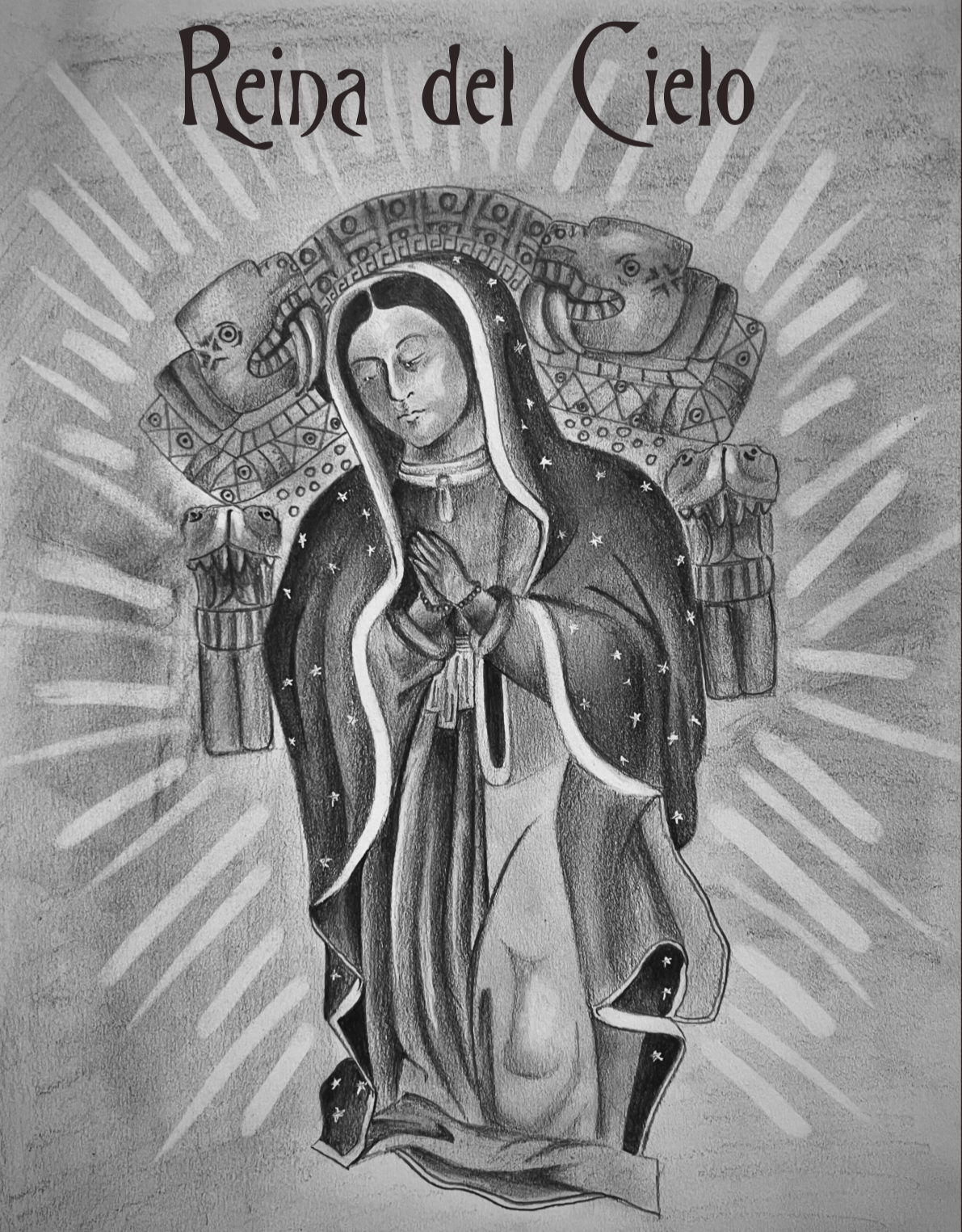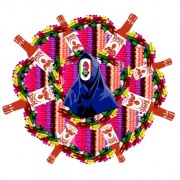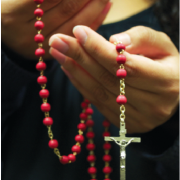Reina del Cielo

Visual Credit: Melissa Morales
La Basilica de Guadalupe is visited by millions of devout Roman Catholics each year, many of which embark on a sacred pilgrimage to visit the church each December 12th; the Day of the Virgen de Guadalupe. While most Catholic saints have a special day of celebration throughout the Gregorian calendar year, the Virgen de Guadalupe is one of the most celebrated, especially among Mexican Guadalupanos. “The Mother of the Pueblo” and the “Queen of the Heavens,” are just some of the many titles given to her by the Latine Catholic community. These titles allude to both the religious and cultural importance that the Virgen de Guadalupe holds, oftentimes even overshadowing other prominent Catholic/Christian figures like the Virgin Mary. In order to understand the Virgen de Guadalupe’s cultural significance, it is important to examine her origin and the syncretism between indigenous religious beliefs and Spanish Catholicism that allowed her to emerge as “La Madre de todos Los Mexicanos” during the Spanish colonial period.
In an effort to exert religious control and indoctrinate indigenous groups during the Spanish colonial period, Spanish missionaries strategically built their churches over established indigenous temples. Building Catholic churches to praise Catholic religious figures in sites that indigenous people of Mexico considered sacred, allowed the Spanish to figuratively and literally bury indigenous religions and forcibly establish Catholicism as the dominant religion in colonial Mexico. One of these former indigenous sacred sites is the Basilica de Guadalupe in Mexico City. The Cerro de Tepeyac is recognized as the place where the Virgen de Guadalupe made her appearances in front of an indigenous peasant named Juan Diego; these stories were first documented in the Nahuatl book “Nican Mopohua” by Antonio Valeriano. However, before the Cerro de Tepeyac was recognized as the sacred site of the Virgen de Guadalupe’s apparitions, it was a temple dedicated to the Aztec mother goddess Coatlicue, also known as Tonantzin.
Just as the Virgen de Guadalupe is recognized as the mother of Jesus Christ, Coatlicue-Tonantzin was the mother of the Aztec Sun and war god, Huitzilopochtli. Moreover, just like Coatlicue, the Virgen de Guadalupe is indigenous and not European like all other Catholic saints of the time. Her race furthers her adoration amongst the Mexican Catholic community as she is regarded as the mother figure of the country. In addition, the colorsof the Virgin’s green cape and red dress were also symbolic for the Aztecs; red is the color of life while green signifies eternity and fertility. Thus, religious syncretism contributed to the Spanish priests’ goal of converting indigenous people in Mexico to Catholicism, and her continued popularity today can be traced back to this history.
Present day, the Virgen de Guadalupe has continued to serve as a guiding light for Catholics in Mexico and Latin America throughout centuries. She served as the symbol of the Mexican Independence Movement of 1810 and her image was also present during the Farmer Workers Movement in the 1960s along with the rest of the Movement. In the words of Dolores Huerta, the Virgen de Guadalupe continues to be a symbol of “faith, hope, and leadership” in the Latine Catholic community as well as a cultural icon in Mexico. While many report Catholicism will continue to decline in the coming decades, the Virgen de Guadalupe’s popularity and cultural significance is likely to continue, despite her ties to Catholicism. While many may not consider themselves Catholic, their faith in the Virgen de Guadalupe will be present as they regard themselves “Guadalupanos.”










Leave a Reply
Want to join the discussion?Feel free to contribute!